Phlegm-Heat in the Lungs
The information provided here is not a replacement for a doctor. You shouldn't use it for the purpose of self-diagnosing or self-medicating but rather so you can have a more informed discussion with a professional TCM practitioner.
At a glance
Preliminary reading: What is a pattern? The concept of Phlegm The concept of Heat The Lungs in Chinese Medicine
Key attributes
Chinese name: 痰热阻肺 Pinyin name: Tán Rè Zǔ Fèi
Pattern nature: Full
Pattern hierarchy: Specific pattern under Phlegm Heat
Causes
Precursor patterns: Kidney Yang Deficiency Spleen Qi Deficiency Wind-Cold invading the Lungs and one other possible precursors
Common causes: 1. Diet, 2. Smoking, 3. External Wind Heat, 4. Emotional stress
Diagnosis
Common symptoms: Thirst Coughing Wheezing Dizziness Feeling of heat and five other symptoms
Pulse type(s): Rapid (Shu), Slippery (Hua)
Tongue description: Red swollen tongue with a sticky yellow coating
Treatment
Treatment principle: Resolve Phlegm, clear Heat, facilitate the descending of Lung Qi
Common formulas: Wen Dan Tang Qing Qi Hua Tan Wan Ma Xing Shi Gan Tang and four other formulas
Pathology
This pattern is similar to Damp-Phlegm in the Lungs, but with additional Heat features, such as feeling of heat, thirst and profuse sticky yellow or green sputum. The typical manifestations of Phlegm are the coughing, short of breath, Phlegm in the throat and chest oppression. The Phlegm can also obstruct the head and cause heaviness and dizziness.
There can be acute or chronic conditions. The acute cases are often caused by external Wind-Heat penetrating the Defense Qi and attacking the Lungs, which results in acute chest infection and fever.
If the acute conditions are not treated completely, then the external Wind-Heat lingers and settles down in the Lungs, and it can become chronic eventually. Prolonged Spleen Qi Deficiency can also cause chronic condition. It is because the impaired Spleen can not transform and transport Body Fluids properly and thus Dampness and Phlegm forms.
Causes
Precursor patterns: Phlegm-Heat in the Lungs can derive from Kidney Yang Deficiency Spleen Qi Deficiency Wind-Cold invading the Lungs Wind-Heat invading the Lungs
Diet: The normal function of ascending Spleen Qi and descending Stomach Qi can be greatly impaired due to irregular eating habit. It then gives rise to the formation of Phlegm, which then get stored in the Lungs. In additional to that, overconsumption of hot or greasy foods can also cause Phlegm and Heat. Therefore, better avoid foods like fried meats, alcohol or any that are spicy or greasy.
Smoking : According to TCM, tobacco is hot in nature and it gives rise to the formation of internal Heat. On the other hand, smoking also dries up Body Fluids and thus causes Phlegm.
External Wind Heat: In acute cases, external Wind Heat penetrates the Defensive Qi and attack the Lungs directly. If the acute condition is not treated completely and lingers for a long time, the Wind Heat can reside in the Lungs and become internal Heat. It then become chronic.
Emotional stress : Internal Heat can also be the result of Qi Stagnation, which happens due to emotional stress such as anger, frustration and resentment.
Diagnosing Phlegm-Heat in the Lungs
Diagnosing a pattern in Chinese Medicine is no easy feat and should be left to professional practitioners. In particular one has to know how to differentiate between different types of pulses and tongue coatings, shapes and colors as well as learn to read from a long list of seemingly unrelated symptoms.
Pulse type(s): Rapid (Shu) or slippery (Hua)
Tongue description: Red swollen tongue with a sticky yellow coating
Main symptoms: Thirst Coughing Wheezing Dizziness Feeling of heat Phlegm in throat Shortness of breath Stifling sensation in the chest Coughing of copious thick yellow sputum Feeling of heaviness of the head and body
Diagnosis commentary: Key characteristic symptoms of this pattern are the barking cough with sticky yellow sputum and Rapid Slippery pulse.
Treating Phlegm-Heat in the Lungs
Treatment principle
Resolve Phlegm, clear Heat, facilitate the descending of Lung Qi
Herbal formulas used to treat Phlegm-Heat in the Lungs
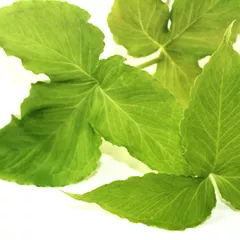
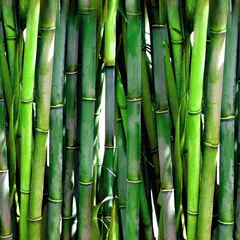
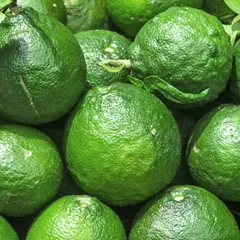
The top herbs in Wen Dan Tang are Crow-Dipper Rhizomes (Ban Xia), Bamboo Shavings (Zhu Ru) and Immature Bitter Oranges (Zhi Shi)
Wen Dan Tang
Source date: 1174 AD
Number of ingredients: 8 herbs
Key actions: Clears Phlegm. Clears Gallbladder. Regulates Qi. Harmonizes the Stomach.
Formula summary
Wen Dan Tang is a 8-ingredient Chinese Medicine formula. Invented in 1174 AD, it belongs to the category of formulas that dry Dampness and transform Phlegm.
Besides Phlegm-Heat in the Lungs, Wen Dan Tang is also used to treat Phlegm Misting the Heart or Gallbladder Deficiency.

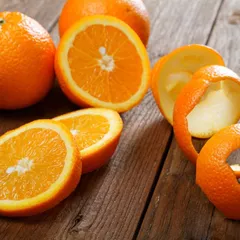

The top herbs in Er Chen Tang are Crow-Dipper Rhizomes (Ban Xia), Tangerine Peel (Chen Pi) and Poria-Cocos Mushrooms (Fu Ling)
Er Chen Tang
Source date: 1148 AD
Number of ingredients: 5 herbs
Key actions: Dries Damp and dispels Phlegm. Regulates Qi and harmonizes the Middle Burner (Stomach and Spleen).
Formula summary
Er Chen Tang is a 5-ingredient Chinese Medicine formula. Invented in 1148 AD, it belongs to the category of formulas that dry Dampness and transform Phlegm.
Besides Phlegm-Heat in the Lungs, Er Chen Tang is also used to treat Damp-Phlegm in the Lungs or Damp-Phlegm.
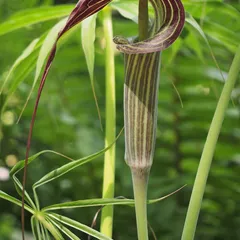

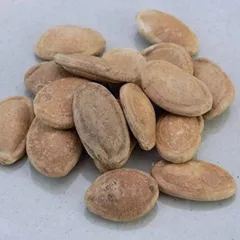
The top herbs in Qing Qi Hua Tan Wan are Arisaema With Bile (Dan Nan Xing), Baikal Skullcap Roots (Huang Qin) and Snake Gourd Seeds (Gua Lou Ren)
Qing Qi Hua Tan Wan
Source date: 1584 AD
Number of ingredients: 8 herbs
Key actions: Clears Heat. Transforms Phlegm. Directs Rebellious Qi downwards. Stops coughing.
Formula summary
Qing Qi Hua Tan Wan is a 8-ingredient Chinese Medicine formula. Invented in 1584 AD, it belongs to the category of formulas that clear Heat and transform Phlegm.
Besides Phlegm-Heat in the Lungs, Qing Qi Hua Tan Wan is also used to treat Lung Heat or Phlegm-Heat.



The top herbs in Ren Shen Ge Jie San are Tokay Geckos (Ge Jie), Ginseng (Ren Shen) and Poria-Cocos Mushrooms (Fu Ling)
Ren Shen Ge Jie San
Source date: 1047 AD
Number of ingredients: 8 herbs
Key actions: Tonifies the Qi. Augments the Kidneys. Stops coughing. Arrests wheezing.
Formula summary
Ren Shen Ge Jie San is a 8-ingredient Chinese Medicine formula. Invented in 1047 AD, it belongs to the category of formulas that tonify Qi.
Besides Phlegm-Heat in the Lungs, Ren Shen Ge Jie San is also used to treat Kidneys failing to receive Qi or Lung Qi Deficiency.
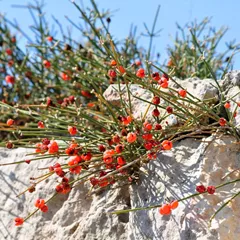
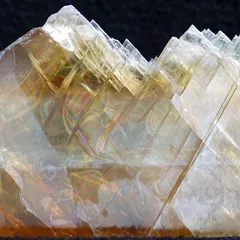
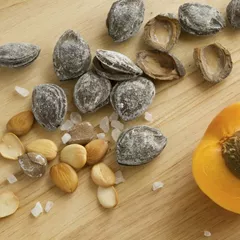
The top herbs in Ma Xing Shi Gan Tang are Ephedra (Ma Huang), Gypsum (Shi Gao) and Apricot Seeds (Xing Ren)
Ma Xing Shi Gan Tang
Source date: 220 AD
Number of ingredients: 4 herbs
Key actions: Invigorates Lung Qi. Clears Heat. Calms wheezing by directing rebellious Qi downward.
Formula summary
Ma Xing Shi Gan Tang is a 4-ingredient Chinese Medicine formula. Invented in 220 AD, it belongs to the category of formulas that clear Heat from the Organs.
Besides Phlegm-Heat in the Lungs, Ma Xing Shi Gan Tang is also used to treat Lung Heat.
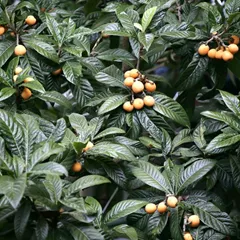
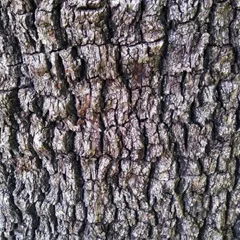
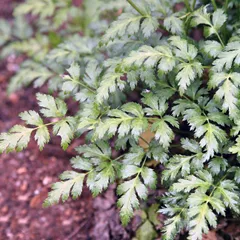
The top herbs in Pi Pa Qing Fei Yin are Loquat Leaves (Pi Pa Ye), Mulberry Bark (Sang Bai Pi) and Goldthread Rhizomes (Huang Lian)
Pi Pa Qing Fei Yin
Source date: 1665 AD
Number of ingredients: 6 herbs
Key actions: Clears Lung Heat . Cools the Blood . Clears Dampness. Invigorates the Blood.
Formula summary
Pi Pa Qing Fei Yin is a 6-ingredient Chinese Medicine formula. Invented in 1665 AD, it belongs to the category of formulas that clear Lung-Heat.
Besides Phlegm-Heat in the Lungs, Pi Pa Qing Fei Yin is also used to treat Lung Heat.
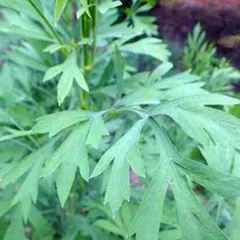
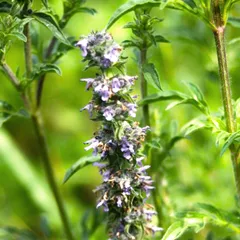
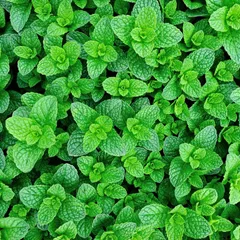
The top herbs in Qing Xin Li Ge Tang are Saposhnikovia Roots (Fang Feng), Japanese Catnip (Jing Jie) and Wild Mint (Bo He)
Qing Xin Li Ge Tang
Source date: 1602 AD
Number of ingredients: 13 herbs
Key actions: Clears Toxic-Heat. Unblocks the stool. Benefits the throat .
Formula summary
Qing Xin Li Ge Tang is a 13-ingredient Chinese Medicine formula. Invented in 1602 AD, it belongs to the category of formulas that clear internal abscesses and sores.
Diet recommendations
Avoid alcohol, red meat, tobacco, dairy or any foods that are spicy, greasy and fried.
Try cupping over the chest or upper back, nasal wash and breathing exercises. Other than those, enough bed resting is also a good idea.
Related conditions
Please keep in mind that a Western Medicine condition can be caused by several Chinese Medicine patterns of disharmony and vice versa. As such a patient suffering from one of the conditions below will not necessarily be suffering from Phlegm-Heat in the Lungs, it is just one pattern that's commonly associated with the condition. Click on a condition to learn what other patterns it's associated with.
Peptic ulcers Hepatitis Cholecystitis Cerebrovascular disease Bronchitis Upper respiratory tract infections Asthma Insomnia Psychosis Pneumonia Pancreatis Biliary reflux gastritis Biliary ascariasis Pleurisy
Consequence patterns
The Spleen is responsible for Body Fluids transformation and transportation. Therefore the impairment of Spleen Qi or Yang gives rise to Dampness and Phlegm. As a vicious circle, prolonged Phlegm worsen the Spleen function.
For the elderly, prolonged accumulation of Phlegm condenses Body Fluids and cause Dryness.
Both Phlegm and Blood are some form of Body Fluids. Prolonged accumulation of Phlegm, which is a kind of condensed Dampness, can give rise to Blood Stagnation, especially for the elderly.
